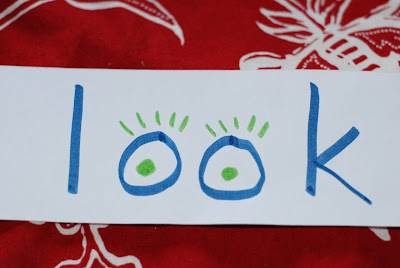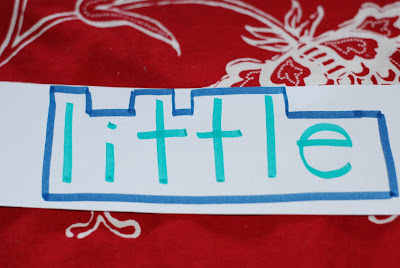
Last year through a friend's blog we discovered Progressively Phonics. This is a free site and the printable books are free. You'll spend a lot on printer ink but they've totally been worth it for us. Each book focuses on a sound/blend. The kids don't have to read every single word, only the words in red. Again, the stories are ridiculous but the kids seem to like them.

Here are some additional tips for early readers:
1) Sight Words:
Some sight words are easier to learn than others. Some can be sounded out phonetically. Others make little sense and have to be memorized. For sight words we use flash cards. We don't do them that often but find that the repetition does help with memorizing. The kids enjoy the challenge of improving their score each time.

2) Letter Recognition:
Often kids will mix up letters, especially as new readers. Below is a picture of cards that my mom made up during her days as a primary teacher. She made each letter into a picture. Turn a "b" into a bat and ball for example. Or if b's and d's are tricky, turn the word "bed" into a picture of a bed, with the pillow on top of the b!


3) Accentuate the sounds:
If we're working on a particular sound/blend it helps to print the word with the sound/blend written in a different colour.

4) Outline the word to give it shape:
Mason often knew larger words quicker than he knew 3 and 4 letter words because he's a visual learner. He often sees larger words as a shape. It you take a word and outline to give it shape this will help your visual learner.

5) Yellow paper:
Did you know that by printing with black ink on yellow paper that you are bettering your chance of remembering what you've written down. This would be a good strategy for those tricky sight words that your child just can't seem to remember!
6) Syllable break down:
For larger words it helps to break the word into syllables or smaller words/sounds.

7) Picture clues:
Encourage your kids to use pictures for clues. As they're reading they may misread or get stuck on a word. Encourage them to finish the sentence. By finishing the sentence they may be able to go back and correct their mistake or they may be able to use picture clues to figure out the difficult word.
No comments:
Post a Comment